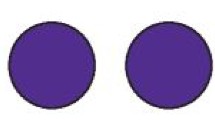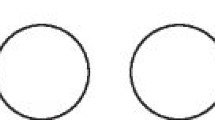Abstract
Data sources
Medline, Embase, the Cochrane Central Register of Controlled Trials and the Cochrane Oral Health Group's Trials Register were searched with no restrictions over publication status or language.
Study selection
Studies chosen were those where participants received surgical treatment to correct upper palatally impacted canines. There was no restriction for age, presenting malocclusion or the type of active orthodontic treatment undertaken. Unilateral and bilaterally displaced canines were included but trials with participants who had craniofacial deformity/ syndrome were excluded.
Data extraction and synthesis
Two review authors independently and in duplicate assessed and selected studies. The Cochrane Collaboration statistical guidelines were to be followed for data synthesis.
Results
No studies were identified that met the inclusion criteria.
Conclusions
Currently, there is no evidence to support one surgical technique over the other in terms of dental health, aesthetics, economics and patient factors. Until high quality clinical trials are conducted with participants randomly allocated into the two treatment groups, methods of exposing canines will be left to the personal choice of the surgeon and orthodontist.
Similar content being viewed by others
Commentary
Cochrane reviews help to ensure that healthcare decisions can be informed by high quality and current research evidence. The Cochrane Collaboration's overall aim is to build and maintain a database of up-to-date systematic reviews of randomised controlled trials (RCT) of healthcare and to make these readily accessible electronically (www.cochrane.org/index.htm)
This Cochrane review was structured well and fulfilled the criteria of a systematic review by setting a clearly focussed question and presenting the results simply, thus being able to influence practice. The inclusion criteria imposed no restriction for age nor for presenting malocclusion or the type of active orthodontic treatment undertaken. Unilateral and bilaterally displaced canines could be included because the test was between the two differing surgical techniques. Trials including participants who had craniofacial deformity/syndrome were excluded, though it would have been beneficial to have explained the rationale behind this.
The search strategy was co-ordinated and comprehensive with non-English-language studies included and interpreted. Additionally, experts were contacted for further published and unpublished studies. Randomised and quasirandomised studies were included and, understandably, the authors' wished to identify all relevant research. There is a greater risk of selection bias in quasirandom trials, however, where allocation is not adequately concealed, compared with RCT that have adequate allocation concealment (www.cochrane-handbook.org/). Ultimately, this did not affect the results here, since the review was empty (ie, did not contain any trials).
The primary outcome was assessment of the periodontal condition of the aligned ectopic canine. Better physiological results are obtained if the canine is aligned through the attached mucosa, providing a keratinised junction between the tooth and gingiva: canine alignment through the unattached mucosal layer has a nonkeratinised junction.1 This has direct consequences for the patient in terms of aesthetics, trauma during function and oral hygiene measures.1, 2 A further suggested outcome measurement could have been relapse and retention of the teeth at the end of treatment. This would have allowed evaluation of the stability of the teeth following the differing methods of surgery.
It was pleasing that secondary outcomes, such as patient response and aesthetics, were to be evaluated. These patients have combined surgical and orthodontic treatment which extends their therapy time, compared with conventional orthodontic-only patients.3 Aesthetic considerations, include the height of the gingival contour and how it relates to the adjacent teeth, are imperative for a pleasing final result.
The authors reported their criteria and regime for quality assessment and data synthesis. Unfortunately, the review was empty so they detailed this as a protocol for future studies. Their regime was sensible and included meta-analysis, if sufficient data were found, and testing for heterogeneity.
Excluded studies were discussed and, interestingly, several reported excellent periodontal health following alignment using the closed technique. These studies were all retrospective so the authors gave these low scores for quality of evidence, but they do provide some research for the reader to critically appraise. Although RCT are the gold standard for judging therapeutic interventions, there were none available for this review. The excluded studies may at least provide direction for a future review.
Currently, one of the authors is undertaking a grant-aided clinical trial entitled, “Surgical exposure of palatally ectopic canines: a randomised clinical study”. Hopefully this one will be well-constructed and robust enough to fulfil the need for evidence in this area.
References
Boyd RL . Mucogingival considerations and their relationship to orthodontics. J Periodontol 1978; 49:67–76.
Kokich VG . Surgical and orthodontic management of impacted maxillary canines. Am J Orthodontics Dentofacial Orthopedics 2004; 126:278–283.
Bishara SE . Impacted maxillary canines: a review. Am J Orthodontics Dentofacial Orthopedics 1992; 101:159–171.
Author information
Authors and Affiliations
Additional information
Address for correspondence: Luisa M Fernandez Mauleffinch, Cochrane Oral Health Group, MANDEC, School of Dentistry, University of Manchester, Higher Cambridge Street, Manchester M15 6FH, UK. E-mail: luisa.fernandez@manchester.ac.uk
Parkin N, Benson PE, Thind B, Shah A. Open versus closed surgical exposure of canine teeth that are displaced in the roof of the mouth. Cochrane Database Syst Rev 2008, issue 4
Rights and permissions
About this article
Cite this article
Shafi, I. No evidence to support one surgical technique over the other for the management of palatally displaced canines. Evid Based Dent 9, 111 (2008). https://doi.org/10.1038/sj.ebd.6400613
Published:
Issue Date:
DOI: https://doi.org/10.1038/sj.ebd.6400613



